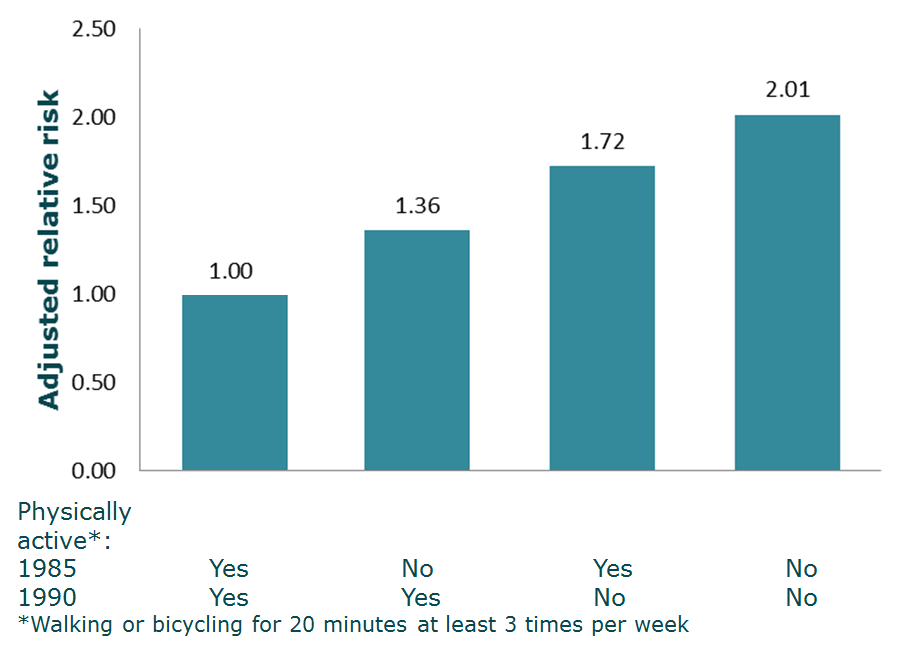Activity inversely related to all-cause mortality
Elderly men in Zutphen with a high level of leisure physical activity (mean 1217 min/week) had a 23% lower all-cause mortality after 10 years of follow-up compared to those with a low level (mean 122 min/week). Men who walked or cycled at least 3 times per week for 20 min or more per day were called active and those who did not meet the criterion were considered sedentary. All-cause mortality was 29% lower in the active compared to the sedentary men.
Reducing activity was associated with greater all-cause mortality
Changes in physical activity over the period of study were also related to all-cause mortality rate. Men who were sedentary in both 1985 and 1990 surveys had a 2 times greater risk of death from all causes by 1995 compared to those who were classed as active in both surveys. A gradient of decreasing risk of death was observed among those who became active compared to those who became or remained sedentary.

Measuring physical activity
In the Zutphen Elderly Study physical activity was assessed with a questionnaire among these retired men, which queried about frequency and duration of walking, cycling, sports, gardening, hobbies and odd jobs. The questionnaire was validated against measures of total energy expenditure.
